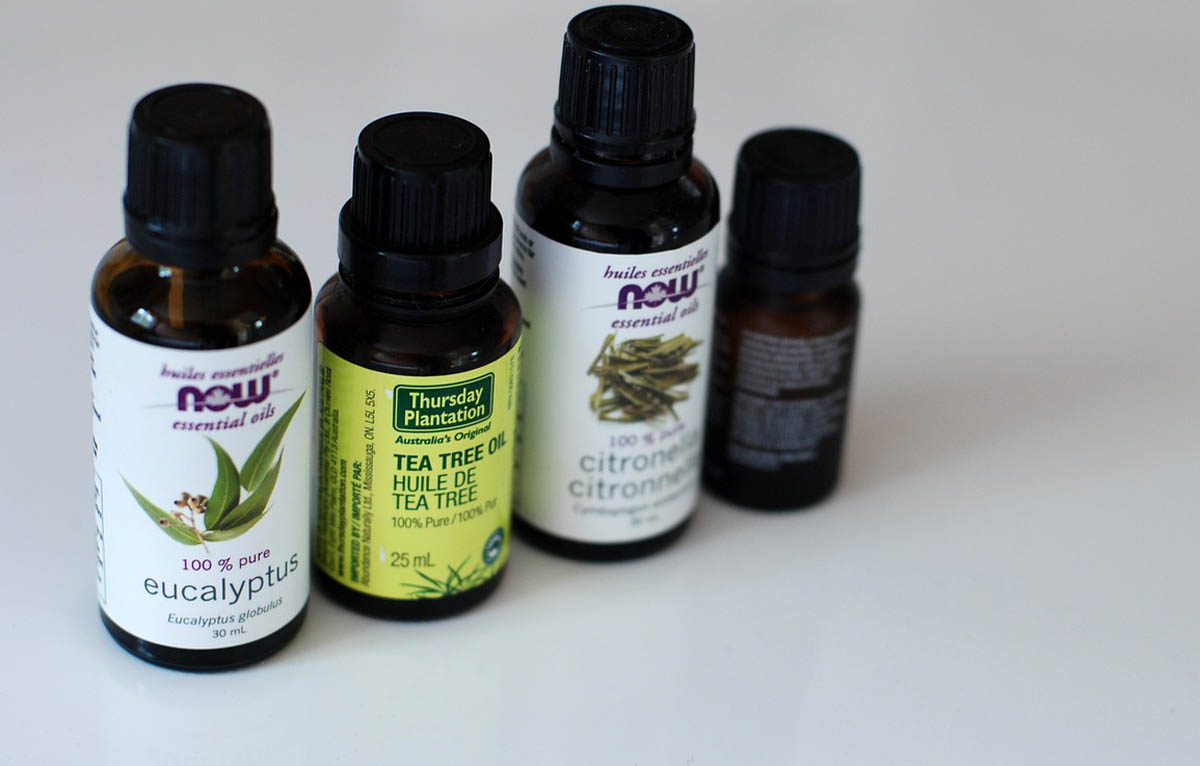Essential oils are concentrated liquids that are extracted from plants, many of which have therapeutic effects. Tea tree oil is often recommended as a safe and natural alternative to chemicals in the treatment of fleas and other conditions on cats. But is it safe?
There is no doubt that tea tree has its place in the treatment of skin conditions, but is best reserved for human health. Even then, only apply to the skin as it is toxic if ingested.
Tea tree oil (also called melaleuca oil) comes from the tea tree (Melaleuca alternifolia) which is native to southwest Queensland and northwest New South Wales. The oil has broad-spectrum antimicrobial activity, anti-inflammatory, antipruritic (itch), anti-cancer and anti-parasitic properties. The main compound is Terpinen-4-ol, which makes up approximately 40% of the oil. Other compounds in tea tree oil include:
- a-Pinene
- a-Terpinene
- Limonene
- p-Cymene
- 1,8-Cineole
- y-Terpinene
- Terpinolene
- a-Terpineol
The toxic properties include terpenes and 1,8-Cineole. Terpenes are aromatic compounds that help to protect the plant from bacteria, fungi, and insects. 1,8-Cineole (eucalyptol) is a skin irritant as well as affecting the respiratory tract and nervous system.
Why can people use tea tree safely but cats can’t?
It’s easy to assume if something is safe enough for people to use, it must be safe for cats too. However, cats have a decreased ability to metabolise many substances because they lack the liver enzyme glucuronyltransferase.
As the saying goes, “the dose makes the poison”, and that certainly applies with tea tree oil. The safe dilution rate for cats is 0.1 to 1%.
While the skin acts as a protective barrier from the outside world, anything applied to it can be absorbed into the body (which is how transdermal patches work). Many of the compounds in tea tree oil are lipophilic and rapidly absorbed through the skin.
A cat’s diligent grooming habits also put them at increased risk of toxicosis because anything on their fur or skin is ingested when the cat grooms itself. The risks outweigh the benefits when there are more effective and safer products for use on cats.
Tea tree toxicosis can develop from a single exposure (usually due to undiluted, or improperly diluted exposure), or can culminate from several smaller exposures, such as when used in an oil burner.
Symptoms of tea tree toxicity in cats
Poisoning occurs in several ways; if inhaled or ingested, it is toxic, it can also cause burns when applied directly to the skin. Central nervous system depression and liver failure are the most common body systems involved. They can range from severe to mind depending on the age of the cat (kittens are most at risk), underlying medical problems, such as liver disease, and the level of exposure.
Symptoms typically appear 2-12 hours after exposure and can last up to 72 hours.
- Depression
- Ataxia (wobbly gait)
- Drooling
- Vomiting
- Tremors
- Difficulty breathing
- Slow heart rate
- Decreased body temperature
- Muscle weakness
- Paralysis
- Seizures
- Reduced level of consciousness
- Contact dermatitis (redness, itching, swelling)
Diagnosis
Diagnosis of tea tree oil toxicosis is based on a history of exposure. Your veterinarian will perform a complete physical examination of your cat and obtain a medical history from you.
Routine bloodwork will reveal elevated liver enzymes.
Treatment
If you suspect your cat has been exposed to tea tree oil and is experiencing any of the above symptoms, seek veterinary attention immediately.
There is no antidote to tea tree toxicosis, and treatment is aimed at managing symptoms. This may include:
- If tea tree oil has been applied to the cat’s coat, decontaminate the coat with warm water and a mild shampoo
- Liver protectants such as S-Adenosylmethionine (SAMe) and silymarin
- Anti-nausea medication to control vomiting
- Anti-seizure medication
- Intravenous fluids to increase urinary excretion of the toxin.
Treating fleas on young kittens
The most common recommended use for tea tree oil in cats is as a natural alternative to flea treatments, especially on kittens who are too young for medicated flea treatment. Due to the risk of toxicity and contact dermatitis, it is safer to avoid the use of tea tree oil to treat fleas.
The most effective and safest method of flea removal on young kittens is manual removal with a flea comb. It does take some time, especially if the kitten is infested, but it is the only safe and non-toxic method. Treat the house for fleas at the same time, as 90% of the flea life cycle is spent OFF the cat and in the surrounding environment. If you only treat the cat and not the home, the problem will continue. This article has information on natural ways to treat fleas in the home.
Other essential oils to avoid
- Bergamot
- Camphor
- Clementine
- Clove
- Eucalyptus
- Fir
- Frankincense
- Grapefruit
- Juniper/Juniper Berry
- Lavender
- Lemon
- Lime
- Mandarin
- Orange (Bitter, Blood, Sweet)
- Oregano
- Pennyroyal
- Peppermint
- Pine
- Rosemary
- Sage
- Spearmint
- Spruce
- Tangerine
- Thyme
- Yarrow
- Ylang ylang
Prevention
- Avoid the use of tea tree oil around the house and on your cat, in fact, avoid all essential oils on cats and in the home, including oil burners.
- When buying products to apply to the skin of cats (antiseptics, shampoos, dips, etc.), always make sure they don’t contain tea tree oil.
- Ensure that cat groomers don’t use products with tea tree oil on your cat.
- Always check that products you use in the home (particularly laundry detergents and cleaning products) don’t contain tea tree oil.
Messybeast has four cases in which cats have been poisoned with tea tree oil which can be found in the links below.
Buddy and Foxy and Tiger and Miss Charlotte.

